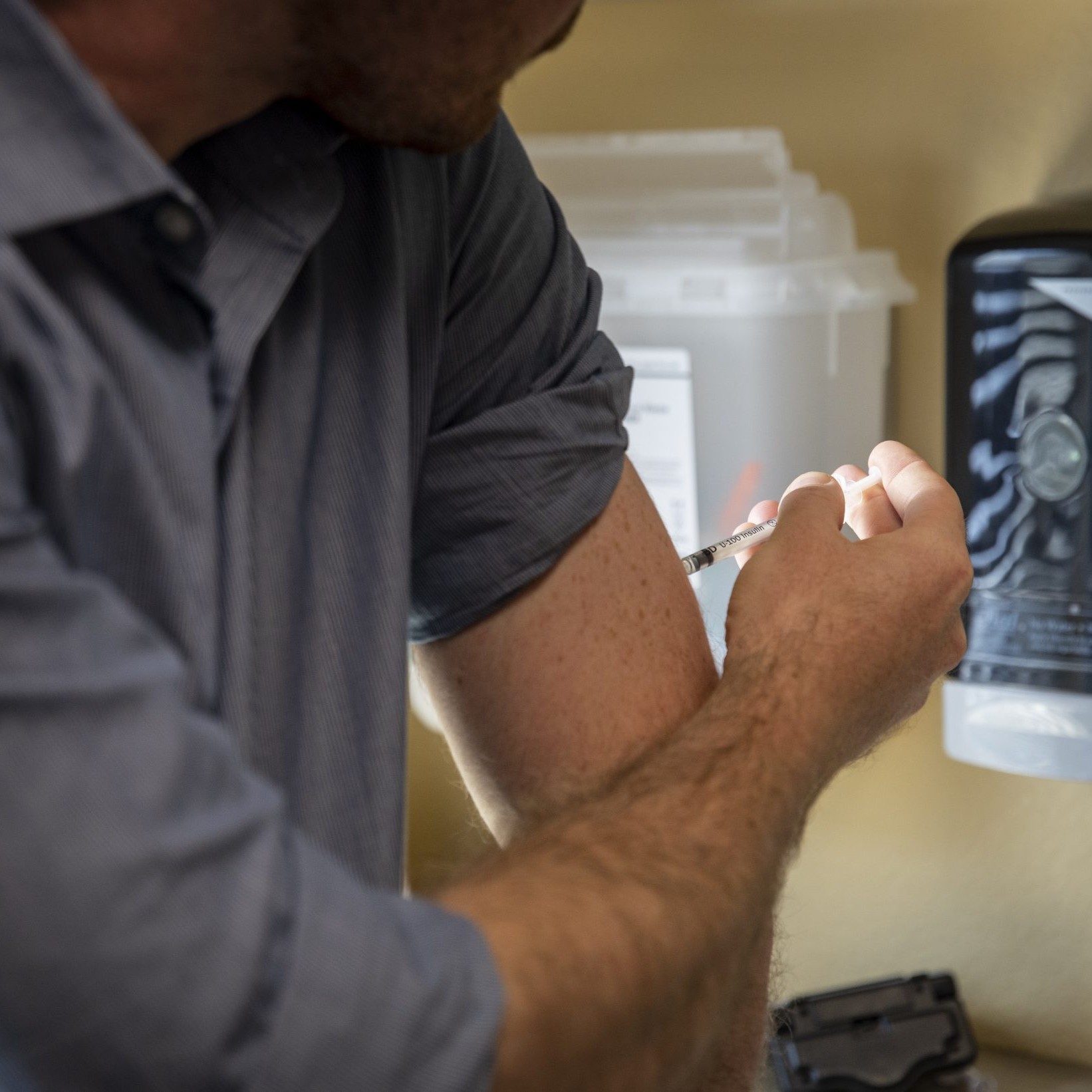Valentine’s Day can be intimidating for allergy suffers. Far too frequently sweethearts visit the emergency room instead of their favorite restaurant or fill the day with sneezes instead of smooches. Avoiding the most common Valentine’s Day allergy offenders is possible, and here are some tips to keep everyone safe.
The Nose Knows
Flowers on Valentine’s Day is a classic way to show your love. Unfortunately, flower pollen can trigger severe symptoms such as sneezing, itchy nose, and itchy/watery eyes or even asthma attacks. Luckily for the lovers out there, according to the American College of Allergy, Asthma and Immunology, there are many flowers options that produce little pollen and still set the mood. Look for tulips, roses, begonia, columbine, crocus, daffodil and geraniums for your allergy suffering sweetheart.
Before we check the box for being safe in the scent department, consider other smell related concerns. It’s important to know physical symptoms such as headaches and sneezing can be triggered from just the smell of some flowers. Often, these symptoms can also be related to perfume or cologne as well. Although these reactions are not actually a true allergy, and instead are generally a reaction to odors created by volatile organic compounds, they can cause a Valentine’s Day disaster.
Food Allergy Offenders
Also on the list of iconic Valentine’s Day allergy offenders is that delectable box of chocolates. Allergy to chocolate is rare, but most chocolate is made with milk, and many of the chocolate assortments contain tree nuts, peanuts, eggs, and other more common food allergens. Read all food labels to stay safe and be sure to take note of label warnings such as, “May contain” or “Processed in a facility”. If these warnings pertain to you, your Valentine’s Day may be sweeter without it.
If you or your Valentine have any food allergies, of course, be sure to carry your epinephrine autoinjector at all times. It’s always the most important accessory you can have! Here’s another helpful hint if food allergies are on the table; Protect your Valentine by calling ahead to that romantic restaurant to discuss the food allergy before you go. Make sure the kitchen and chef can be accommodating on a busy night like Valentine’s Day. Better yet, you might get extra points in the Cupid category if you roll up your sleeves and prepare all your Valentine’s favorites yourself. Added bonus? You won’t have to worry about finding the perfect facemask to match your outfit this year!
Gifts That Don’t Keep Giving
If your Valentine has their heart set on jewelry, keep in mind that it can contain varying amounts of nickel. A contact allergy to nickel can lead to symptoms such as severe itching, blisters, and rash in the area where the jewelry touches the skin. Unlike allergy to flowers and foods, a reaction to a metal may take several days to develop after exposure. If baubles and jewels are the burning desire of your Valentine, however, don’t worry! Sticking to jewelry made with stainless steel, copper, platinum and 24 karat gold is usually a safe choice.
Finally, consider skipping the stuffed animals this year. The bigger the teddy bear, unfortunately, can mean the bigger the dust mite population that it ends up harboring. These mites are one of the most common causes of allergies and can be found in any fabric item. Much like pollen, they can bring on sneezing and other nasal symptoms, and even result in asthma flareups. Keep the temptation for the plush gifts away and make your Valentine your main squeeze instead!
See more news and insights from United Allergy Services on Facebook, LinkedIn, or Twitter.
You may also be interested in . . .
St. Patrick’s Day, Green Beer, and Wheat Allergy
St. Patrick's Day is fast approaching! Are you wondering if your wheat allergy will get in the way? History of the Holiday In Ireland, the holiday was…
The BIG 9: Food Allergens
For the last 17 years, the official list of major food allergens, or “The Big 8” has consisted of milk, egg, fish, shellfish, peanut, tree nut, wheat, and…
David Boone on at-home allergy shots as potential long-term relief from “cedar fever”
Winter doesn't spell relief for all allergy sufferers -- especially in Texas and parts of other nearby states, where the colder weather signals the…



